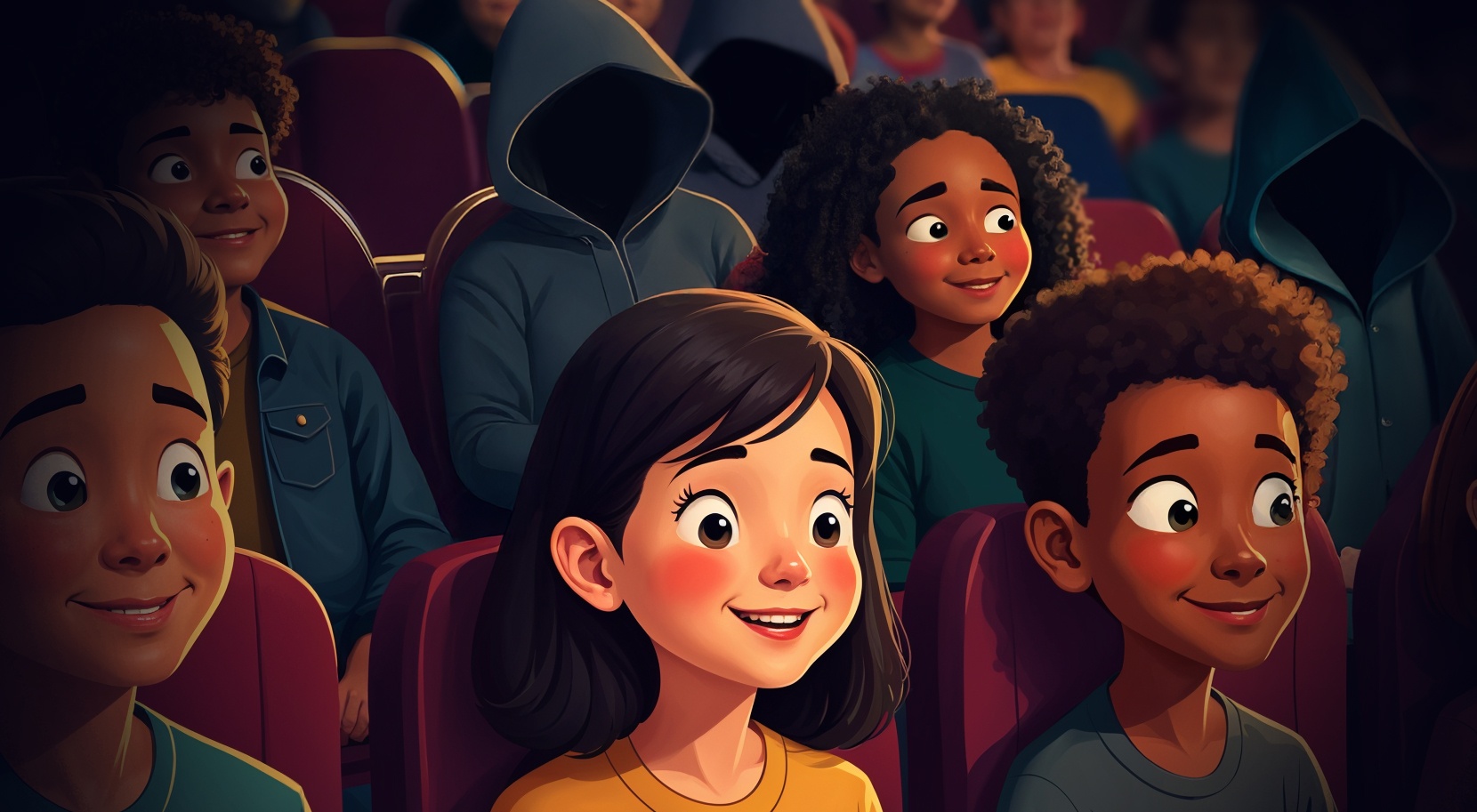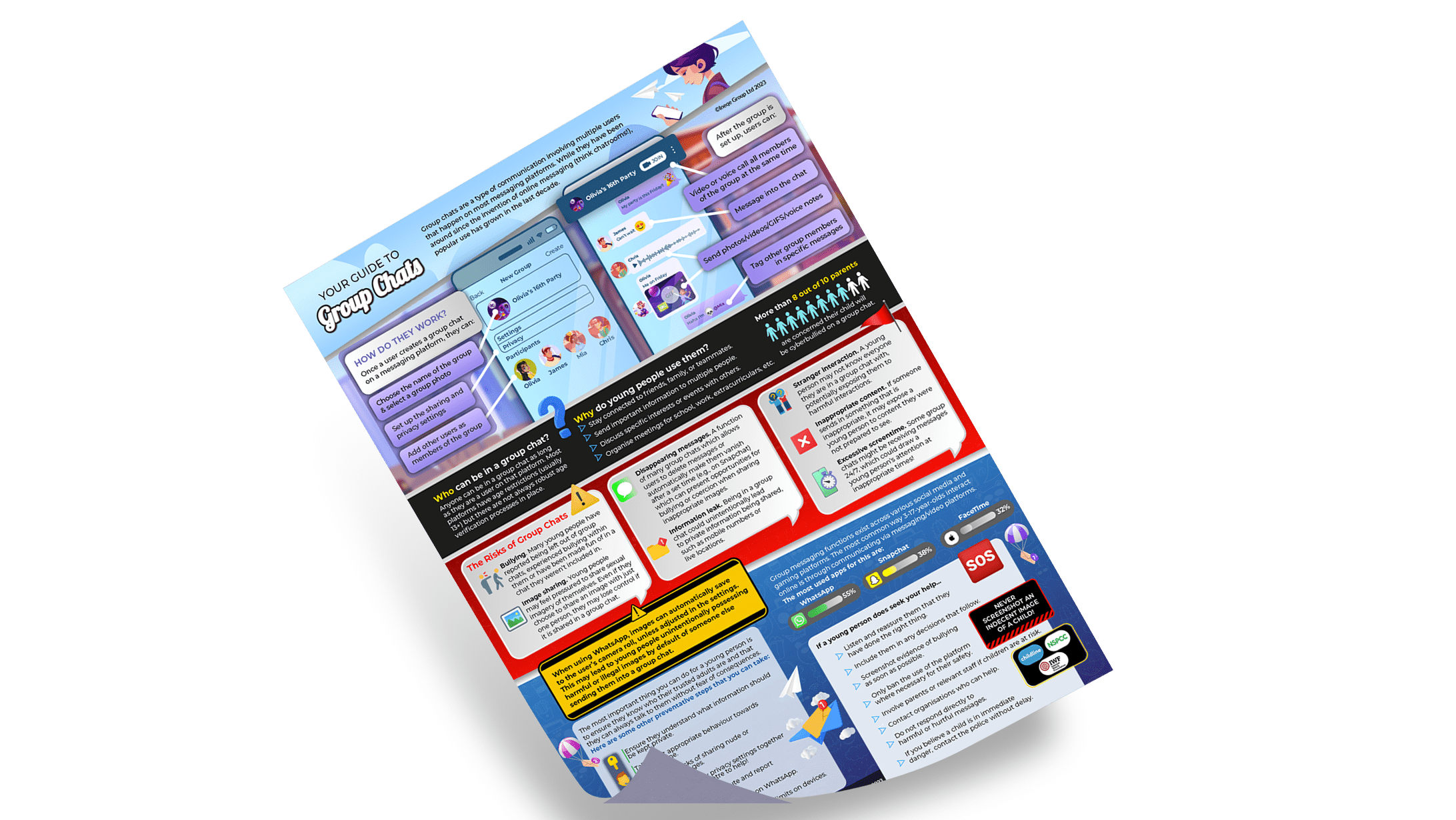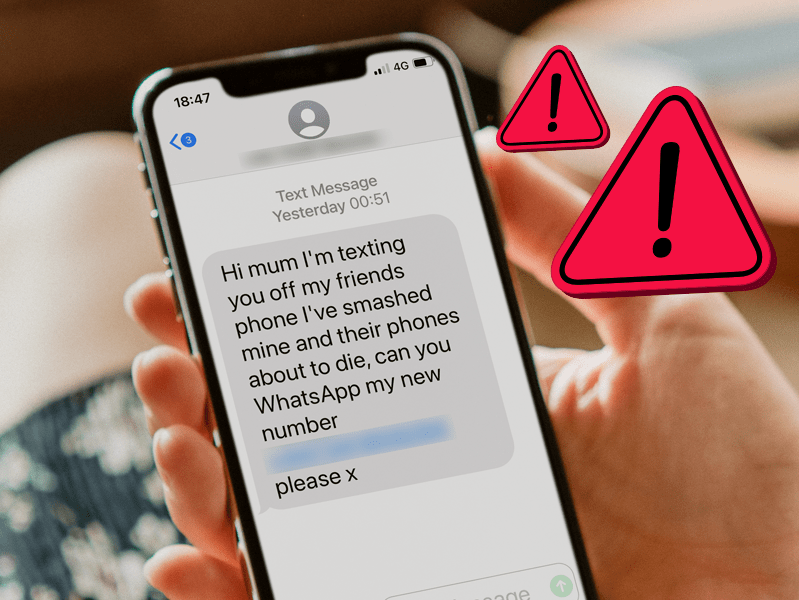Last Updated on 2nd October 2025
Read Time: 5 Minutes
1st October 2025
Imagine a room filled with children and adults where images, videos and other information are displayed on a screen for all to see. You’re probably picturing a concert, a cinema or some other happy family occasion. But what if the adults in the room are those with ill intentions? What if these adults could interact with the children and encourage them to bring other young people to the room? In this room, the imagery on the screen is sexually explicit, violent, and illegal material that’s highly inappropriate for children.
Sadly, this nightmarish scenario is reportedly happening on WhatsApp through the use of ‘Add Everyone’ group chats

What Are ‘Add Everyone’ Group Chats?
These WhatsApp groups are spaces where children and young people are invited to join a chat that contains content such as sexual images, material promoting self-harm, sexual violence, racism and other inappropriate content. These chats may be created by adults seeking to connect with younger users or by young people themselves as a seemingly fun activity. However, as the name suggests, it is difficult to control who becomes a member of these groups, which means that access to children and young people can easily fall into the wrong hands. In some cases, the group owners ask for children to add their contacts to the group, ‘except their parents’.
As WhatsApp has lowered its minimum age from 16 to 13 this year, the risk of young users encountering inappropriate content and adults may increase. However, reports indicate that these groups have targeted children as young as 9.
Why Would a Child or Young Person Want to Join the Group?
Children and young people might be drawn to such groups out of curiosity or a desire for social connection. The allure of being part of a larger community can overshadow the potential dangers. Unfortunately, these groups often exploit this curiosity, presenting harmful content and access to strangers as if it were normal or acceptable.
Why WhatsApp?
With 8 in 10 young people using WhatsApp by the time they have reached 16-17 years old, many potential victims are already on the platform. Additionally, WhatsApp’s end-to-end encryption (E2EE) makes it particularly appealing for sharing inappropriate content. While these groups can exist on any social platform, this encryption ensures that only the sender and recipient can read messages – neither WhatsApp itself nor the police can access them. This means that inappropriate content shared within groups can be difficult to monitor and is only seen by authorities if a device is seized during a police investigation.
What Are the Risks?
Many of us routinely use WhatsApp to connect with our friends and families, which can build a false sense of security that this is a normal app where nothing can go wrong. However, all technology is influenced by the people who use or abuse it. These groups can present a number of risks to the children and young people who are invited to join, such as:
Next Steps and Further Advice
To protect the children in your care, consider these steps.
Encourage Open Communication
Discussing online safety with young people doesn’t have to feel like a chore. Approach the topic with curiosity and openness, with regular conversations about what you hear in the news or what their friends are doing online. This can create a comfortable space for them to share, often making it easier for young people to open up about their own situations and encourage critical thinking.
Set Privacy Settings
Work with your child to set privacy settings that ensure only their contacts can add them to groups and view their information. When added to a group, users will have the option to exit the group, block it or report it – ensure the child in your care knows how to do this. Remind them that friends can still add them to group chats, so discuss how to handle invitations they receive.
Screenshot, Report, and Block
If a young person is added to an inappropriate group chat, take a screenshot of the evidence* and report it directly to the platform. Encourage them to block any concerning users and to speak to a trusted adult or an organisation like Childline on 0800 1111.
*NEVER screenshot an indecent image of a child.
Other Articles/Resources
Discussing online life with your child
Join our Online Safeguarding Hub Newsletter Network
Members of our network receive weekly updates on the trends, risks and threats to children and young people online.


















